John VI (701-705) 86th Pope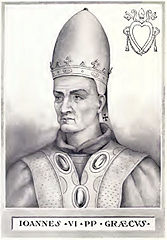
The Lombards marched on Rome
He defended the Church against the emperor
He ransomed many slaves
John VII (705-707) 87th Pope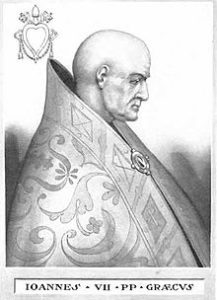
He renovated and built churches
The Lombards returned papal states in northern Italy
He faced pressure from the emperor
He convinced English priests in Rome to wear the collar
Sisinnius (708) 88th Pope
He fortified the walls of Rome against invaders
Constantine (708-715) 89th Pope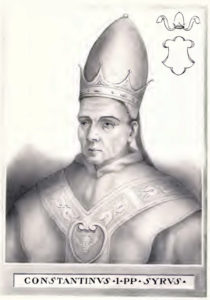
Famine broke out around Rome for about four years
The Moors invaded Spain
He encouraged the Christians in Spain in their struggles against the Moors
He succeeded in bring some form of peace between the Church and the empire
St. Gregory II (715-731) 90th Pope
He was much interested in missionary work
The emperor violently opposed the use of images in churhes. (Inconoclasm)
He condemned the emperor’s actions
St. Gregory III (731-741) 91st Pope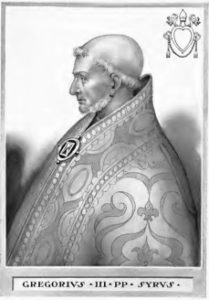
He condemned iconoclasm and excommunicated the emperor
He sought help form Charles Martel, leader of the Franks, for protection from the Lombards
St. Zachary (741-752) 92nd Pope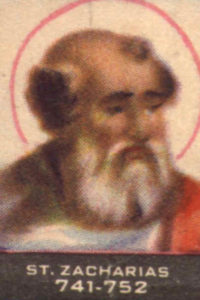
He dealt with the Lombard problem, creating a truce
The Frankish Church was reorganized and revitalized
The reign of the “do nothing kings” ended
Pepin became the first in the Carolingian kings
He consecrated Pepin, the first investiture of a king by a pope
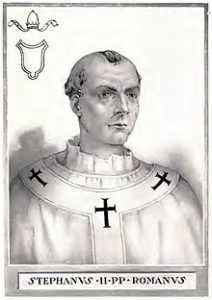
Stephen II (752-752) 93rd Pope
He died of a stroke while dealing with Church affairs.
Stephen III (752-757) 94th Pope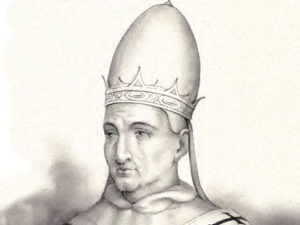
He sought the aid of Pepin in defeating the Lombards
The emperor convened a council condemning the use of images
Pepin bestowed sovereign papal states to the papacy
From this time popes would be temporal and spiritual leaders
He was loved by the Roman poor
He built hospitals around St. Peters church
St. Paul (757- 767) 95th Pope
He was the brother of Stephen II
He aligned himself with the Franks, enjoying peace with the Lombards
He welcomed monks who fled to escape persecution for their love of images
He freed prisoners condemned with debts
He forgave the injuries the Lombards had done to the Church.
Stephen IV (768-772) 96th Pope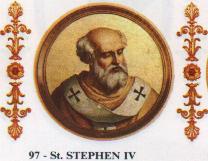
Several political groups sought to name candidates for pope
In response to recent events, the council of Lateran in 769 declared that only cardinals could be elected pope
He was not able to restrain the Roman mob killed his rivals despite his protest.
The Frankish leaders returned back to the Vatican some previously confiscated lands.
Adrian I (772-795) 97th Pope
The “Donation of Charlemagne” provided the future papal states
Charlemagne became the King of the Franks and Lombards, becoming the official protector of Rome and the papacy
He restored the walls of Rome and the ancient aqueducts
St. Leo III (795-816) 98th Pope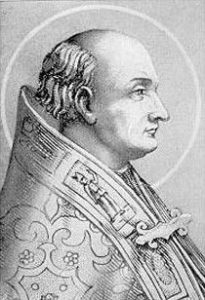
He elevated Cologne and Salzburg into archdioceses
Some Christians believed in the heresy that Jesus was not God but merely a man whom special graces were given (Adoptionism)
He fled Rome seeking the aid of Charlemagne
He returned to Rome with an escort of Frankish nobles
He crowned, anointed and swore allegiance to Charlemagne
Charlemagne is the first Holy Roman emperor
The Roman and Gaulish rites were fused
Charlemagne united all of Europe, providing the foundation of modern Europe
The matter of clarification of the Trinity comes up in Spain. The Nicene Creed in its original form specifies that the Holy Spirit proceeds from the Father
Charlemagne urged Leo to add Filoque (“and the son”) to the Nicene Creed. This custom of adding Filoque spread from Spain to Gaul
